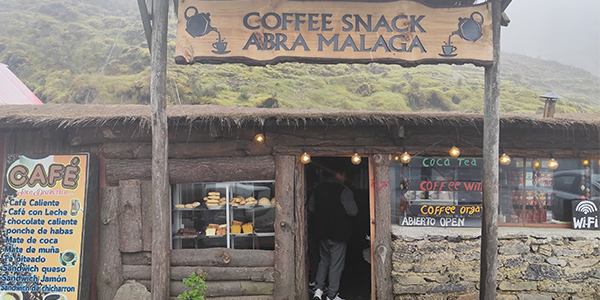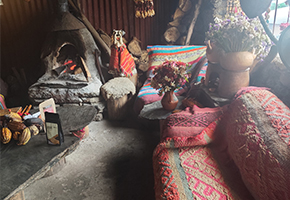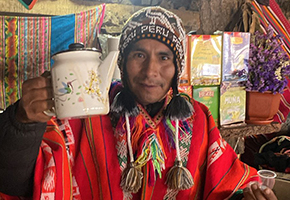Plan Your Adventure at the Right Season
If you’re wondering about the best time to hike Salkantay Peru, the answer is clear: the dry season between April and October. During these months, the weather is more stable, the skies are clear, and the stunning landscapes of the Andes can be enjoyed to the fullest. Choosing the right season is key to making your trek safe, enjoyable, and unforgettable.
Salkantay in the Dry Season (April–October)
The dry season is considered the most popular period for the Salkantay Trek. Expect sunny days, cold nights, and excellent visibility of the snow-capped peaks and turquoise lakes. This is also the high season for tourism, so you’ll share the trail with more hikers. Booking your trek in advance is highly recommended.
Advantages: Clear skies, breathtaking views, lower risk of rain.
Considerations: Cold nights, higher demand, early reservations needed.
Salkantay in the Rainy Season (November–March)
Hiking in the rainy season is possible, but the trail can be muddy, slippery, and occasionally blocked by landslides. Rain showers are frequent, and clouds often cover the mountains. However, the landscapes are greener and less crowded.
Advantages: Fewer tourists, lush vegetation, lower prices.
Considerations: Wet conditions, more challenging hiking, limited safety in heavy rain.
Month-by-Month Overview
April to May
Start of the dry season, with fewer crowds and fresh landscapes. Excellent balance between weather and availability.
June to August
Peak season. The weather is very dry, with cold nights and busy trails. Perfect for those who want the safest conditions.
September to October
Still dry but with warmer days and slightly fewer hikers. A great time for good weather and more availability.
November to March
Rainy months. Not recommended unless you are prepared for difficult conditions and flexible with weather changes.
Tips for Choosing the Best Time
Book early if traveling between June and August, as tours fill up quickly.
Pack appropriately for cold nights even in the dry season.
Avoid February, as heavy rains often close parts of the trail for safety.
Stay flexible in the rainy season, as delays may occur.
What you should do before booking Salkantay Trek to Machu Picchu
1. What is the Salkantay Trek, and how does it compare to the Inca Trail?
The Salkantay Trek is an alternative route to Machu Picchu, offering breathtaking landscapes, including snow-capped mountains, cloud forests, and high-altitude passes. Unlike the Inca Trail, the Salkantay Trek does not require a permit and is less crowded, providing a more adventurous experience.
2. How many days does the Salkantay Trek take to reach Machu Picchu?
The standard Salkantay Trek takes 5 days and 4 nights, covering approximately 72 km (45 miles). However, there are shorter and longer variations of the trek available.
3. What is the difficulty level of the Salkantay Trek?
The Salkantay Trek is considered moderate to challenging, as it involves hiking at high altitudes and steep ascents. The highest point is the Salkantay Pass at 4,650 m (15,255 ft). Proper acclimatization is recommended before starting the trek.
4. Do I need a permit to hike the Salkantay Trek?
No, unlike the Inca Trail, the Salkantay Trek does not require a special permit. However, you do need an entrance ticket for Machu Picchu, which should be booked in advance.
5. What is the best time of year to hike the Salkantay Trek?
The best time to hike the Salkantay Trek is during the dry season (April to October). The weather is more stable, with clear skies and less rain. The rainy season (November to March) can make the trail muddy and challenging.
6. What should I pack for the Salkantay Trek?
Essential items include:
- Hiking boots (waterproof and comfortable)
- Warm layers (temperatures drop at night)
- Rain jacket or poncho
- Sleeping bag (suitable for cold weather)
- Sun protection (hat, sunglasses, sunscreen)
- Water bottle and purification tablets
- Basic first aid kit
7. Is altitude sickness a concern on the Salkantay Trek?
Yes, altitude sickness can be an issue, especially at the Salkantay Pass (4,650 m). It is recommended to spend a few days in Cusco (3,400 m) before the trek to acclimatize. Staying hydrated, avoiding alcohol, and chewing coca leaves can help with symptoms.
8. How do I get to Machu Picchu from the end of the Salkantay Trek?
After reaching Hidroelectrica, you have two options:
- Hike 3 hours to Aguas Calientes.
- Take a 30-minute train from Hidroelectrica to Aguas Calientes.
From Aguas Calientes, you can hike or take a bus up to Machu Picchu.
9. Are there accommodation options along the Salkantay Trek?
Yes, most trekking companies provide campsites or eco-lodges along the route. Some upgraded tours offer more comfortable accommodations, such as glass cabins or domes. The final night is usually spent in a hotel in Aguas Calientes.
10. Can I visit Machu Picchu without hiking the Salkantay Trek?
Yes, you can take a train from Cusco to Aguas Calientes, followed by a short bus ride or hike up to Machu Picchu. This is the most popular option for visitors who prefer not to hike.




